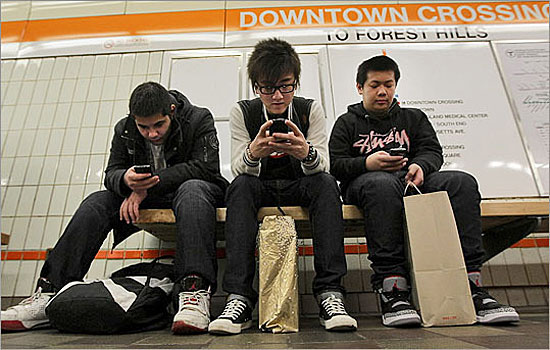Dial M for Metro WiFi
February 25, 2014
Hold the phone: after years of study, a project to bring WiFi and cellular service to L.A.’s subway system is now underway.
The project is on track for completion by January, 2016. But Daniel Lindstrom, Metro’s manager of wayside communications, said that work will likely take place in stages, with segments of the system—such as stations in the downtown L.A. business district—potentially coming on line earlier.
Work began in January. For now, they’re dealing with what Lindstrom calls the “techie stuff,” like where to locate a 2,000-square-foot “base station hotel” that will house equipment for cell phone providers that join the Metro network.
The company chosen to develop and operate Metro’s system, InSite Wireless, has already brought WiFi and cell service to Boston’s decades-old subway system, known as “The T.”
“If you can implement it in a 100-year-old subway, you can definitely implement it on a modern system like ours,” Lindstrom said.
Lindstrom said he could not estimate how many people will use the service when it is up and running in Los Angeles, but noted that there is particularly strong demand among younger passengers, whereas older riders tend to have more of a take-it-or-leave-it attitude.
“If you’re in your 20s, like my kids, they say, ‘Why don’t you have cell phone coverage in the subway? What’s wrong with you?’ ” Lindstrom said. “I’m just about to hit 50, and I think it’s nice to have but I don’t necessarily expect it. And if you’re in your 80s, you say, ‘Just forget about it.’ ”
Riders of the Red and Purple subway lines won’t be the only beneficiaries of the new service; it will also cover below-grade portions of the Blue, Gold and Expo lines, along with the future Crenshaw Line.
Lindstrom said that people with data plans through their individual cell phone service will be able to use their devices on Metro free of charge. Those who don’t have such plans will pay as they go when they sign into the network on a platform or in a subway car, much as they currently do on airplanes—or in other underground systems around the world.
“London makes you pay $3 a day,” Lindstrom said.
Lindstrom said Metro is hoping to offer an early taste of what the system will offer by having Union Station’s WiFi up and running by its 75th anniversary later this year.
When the whole system is online, Metro will receive at least $360,000 a year from the program, and its share of revenue from InSite could potentially be far greater. A report last year to the agency’s Executive Management Committee said that Bay Area Rapid Transit in northern California reported $2 million a year in new revenue after it installed cell and data service.
The service also will enhance security by enabling passengers to call for help if needed. And, Lindstrom said, it will allow sheriff’s deputies and security officers to view and respond to real-time video feeds.
“It’s a force multiplier,” Lindstrom said. “It will allow deputies to see things as they are going on.”
Posted 2/21/14













 405 bridge work causes a stink
405 bridge work causes a stink

